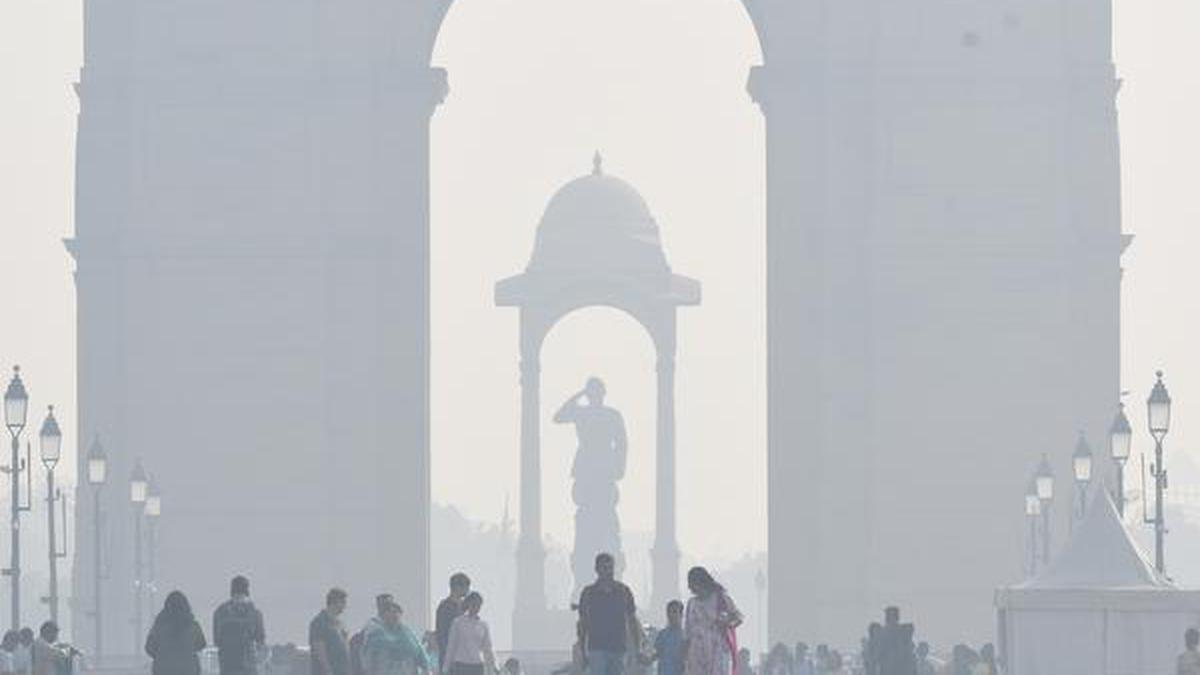Table of Contents
Recent studies published in international journals have revealed a concerning link between air pollution levels and the incidence of type 2 diabetes in Chennai and Delhi. While this connection has been observed in Western countries and China, these studies are significant because they demonstrate that the relationship also holds in urban India.
Indian cities have consistently ranked high in terms of air pollution, frequently surpassing the limits set by the World Health Organisation. The new studies were conducted as part of the Centre for Ardiometabolic Risk Reduction in South Asia (CARRS) Surveillance Study. Researchers recruited 6,722 adults from Chennai and 5,342 from Delhi, tracking their health through questionnaires and blood samples to measure fasting plasma glucose (FPG) and glycosylated haemoglobin (HbA1c) between 2010 and 2016.
Moreover, the researchers developed air pollution and exposure models using satellite data and emissions inventories. The findings indicated that a mere 10 μg/m3 (micrograms per cubic metre air) difference in annual average PM2.5 could lead to a 9-36% higher risk of developing type 2 diabetes. Importantly, the link was attributed to long-term exposure to ambient PM2.5, rather than isolated episodes of high pollution.
The studies showed that increased PM2.5 levels were associated with higher FPG and HbA1c levels. For every 10 μg/m3 increase per month, FPG increased by 0.21-0.58 mg/dL (milligrams per decilitre) and HbA1c by 0.012-0.024 in Delhi, while FPG increased −0.36-1.39 mg/dL and HbA1c increased by 0.01-0.06 in Chennai. Interestingly, hypertensive individuals in Chennai were more susceptible to developing type 2 diabetes due to long-term PM2.5 exposure, whereas younger participants in Delhi showed a higher susceptibility to the disease.
These studies shed light on how ambient PM2.5 concentrations in the environment can impact internal processes within the body. For instance, previous research on mice has shown that short-term exposure to PM2.5 can induce vascular insulin resistance and inflammation triggered by pulmonary oxidative stress. The findings reinforce the notion that any condition involving oxidative stress may increase vulnerability to harm from PM2.5.
Another study published in the journal Hypertension found strong evidence supporting a temporal association between high levels of ambient air pollution, increased systolic blood pressure, and incident hypertension. This is particularly concerning for India, which already bears a significant burden of noncommunicable diseases. Noncommunicable diseases accounted for 64% of the national disease burden in 2021, and the correlation between poor air quality and respiratory and cardiovascular health raises public health concerns.
Aside from its impact on health, air pollution has also been found to affect other aspects of life. A model-based study published in The Lancet Planetary Health in 2021 estimated that increasing PM2.5 exposure by 10 μg/m3 could raise the risk of pregnancy loss by 3% in India, Pakistan, and Bangladesh.
Key Features of the Studies:
- The studies revealed a link between air pollution levels and type 2 diabetes incidence in Chennai and Delhi.
- Researchers used satellite data and emissions inventories to develop air pollution and exposure models.
- Hypertensive individuals in Chennai and younger participants in Delhi showed a higher susceptibility to developing type 2 diabetes with long-term PM2.5 exposure.
Effects of Air Pollution on Type 2 Diabetes:
Air pollution, particularly PM2.5, has been found to increase the risk of developing type 2 diabetes.
- A 10 μg/m3 increase in PM2.5 levels was associated with a 9-36% higher risk of developing type 2 diabetes.
- FPG and HbA1c levels increased with higher PM2.5 exposure.
- Long-term exposure to ambient PM2.5 was linked to type 2 diabetes, rather than intermittent episodes of high pollution.
Pros and Cons:
The identification of the link between air pollution and type 2 diabetes in Indian cities has several pros and cons.
- Pros:
- Raises awareness about the harmful effects of air pollution on human health.
- Provides evidence for policymakers to implement stricter regulations on air quality and emissions reduction.
- Encourages individuals to take protective measures, such as wearing masks and reducing outdoor activities during high pollution days.
- Opens avenues for further research and interventions to mitigate the impact of air pollution on public health.
Cons:
- Heightens concerns about the public health crisis posed by poor air quality.
- Places additional pressure on the government and relevant authorities to take immediate action.
- Raises awareness about the potential risks associated with living in highly polluted areas.
Fun Fact:
Did you know that air pollution affects not only our respiratory and cardiovascular health but also our reproductive health? In addition to increasing the risk of type 2 diabetes, air pollution has been linked to a higher risk of pregnancy loss in certain regions.
Mutiple Choice Questions
1. What is the main focus of the studies mentioned in the given information?
a) The link between air pollution and type 2 diabetes
b) The effects of air pollution on pregnancy loss
c) The impact of air pollution on respiratory and heart health
d) The development of air pollution and exposure models
Explanation: The main focus of the studies mentioned in the given information is the link between air pollution and the incidence of type 2 diabetes in Chennai and Delhi.
2. How did the researchers track the health of the participants in the studies?
a) Through physical examinations
b) Through questionnaires and blood samples
c) Through monitoring devices
d) Through follow-up interviews
Explanation: The researchers tracked the health of the participants in the studies through questionnaires and blood samples.
3. What is the significance of the link between air pollution and type 2 diabetes findings in urban India?
a) It confirms previous findings from Western countries and China
b) It highlights the severity of air pollution in Indian cities
c) It suggests a higher risk of developing type 2 diabetes in urban India
d) It indicates the need for stricter air quality regulations in urban India
Explanation: The significance of the link between air pollution and type 2 diabetes findings in urban India is that it confirms previous findings from Western countries and China, indicating that the link holds true in urban India as well.
4. What are PM2.5 levels?
a) Levels of particulate matter in the air
b) Levels of pollution in groundwater
c) Levels of noise pollution
d) Levels of pollution in rivers
Explanation: PM2.5 levels refer to levels of particulate matter in the air, specifically particles with a diameter of 2.5 micrometers or smaller.
5. According to the studies, what is the relationship between PM2.5 levels and the risk of developing type 2 diabetes?
a) As PM2.5 levels increase, the risk of developing type 2 diabetes decreases
b) As PM2.5 levels increase, the risk of developing type 2 diabetes remains the same
c) As PM2.5 levels increase, the risk of developing type 2 diabetes decreases in Chennai but increases in Delhi
d) As PM2.5 levels increase, the risk of developing type 2 diabetes increases
Explanation: According to the studies, as PM2.5 levels increase, the risk of developing type 2 diabetes increases.
6. Which group was found to be more susceptible to developing type 2 diabetes against long-term exposure to PM2.5 in Chennai?
a) Hypertensive participants
b) Younger participants
c) Participants with high fasting plasma glucose levels
d) Participants with high glycosylated haemoglobin levels
Explanation: The studies found that hypertensive participants were more susceptible to developing type 2 diabetes against long-term exposure to PM2.5 in Chennai.
7. What does the study mentioned in the given information suggest about the effects of ambient PM2.5 on processes inside the body?
a) It causes oxidative stress and triggers inflammation
b) It increases the risk of pregnancy loss
c) It induces vascular insulin resistance
d) It increases systolic blood pressure and incident hypertension
Explanation: The study mentioned in the given information suggests that ambient PM2.5 concentrations can affect processes inside the body by causing oxidative stress and triggering inflammation.
8. What is the burden of noncommunicable diseases in India?
a) 36%
b) 64%
c) 46%
d) 72%
Explanation: The burden of noncommunicable diseases in India accounted for 64% of the national disease burden in 2021.
9. What is the potential risk of increasing PM2.5 exposure by 10 μg/m3, according to a model-based study?
a) Increase in the risk of heart disease
b) Increase in the risk of respiratory diseases
c) Increase in the risk of pregnancy loss
d) Increase in the risk of type 1 diabetes
Explanation: According to a model-based study mentioned in the given information, increasing PM2.5 exposure by 10 μg/m3 could increase the risk of pregnancy loss by 3% in India, Pakistan, and Bangladesh.
10. What is the name of the surveillance study mentioned in the given information?
a) Centre for Ardiometabolic Risk Reduction in South Asia (CARRS) Surveillance Study
b) Indian Air Pollution and Health Study (IAPHS)
c) International Journal of Air Pollution and Health (IJAPH)
d) South Asian Surveillance Study on Air Pollution and Health (SASS-APH)
Explanation: The surveillance study mentioned in the given information is called the Centre for Ardiometabolic Risk Reduction in South Asia (CARRS) Surveillance Study.
Brief Summary | UPSC – IAS
Two studies conducted in Chennai and Delhi have found a connection between air pollution levels and the prevalence of type 2 diabetes. The studies, part of the Centre for Ardiometabolic Risk Reduction in South Asia (CARRS) Surveillance Study, tracked the health of thousands of adults from 2010 to 2016 and examined their exposure to air pollution. The researchers discovered that long-term exposure to higher levels of PM2.5 was associated with a higher risk of developing type 2 diabetes, with a range of 9-36%. The studies also identified that hypertensive individuals and younger participants were more vulnerable to developing the disease.











